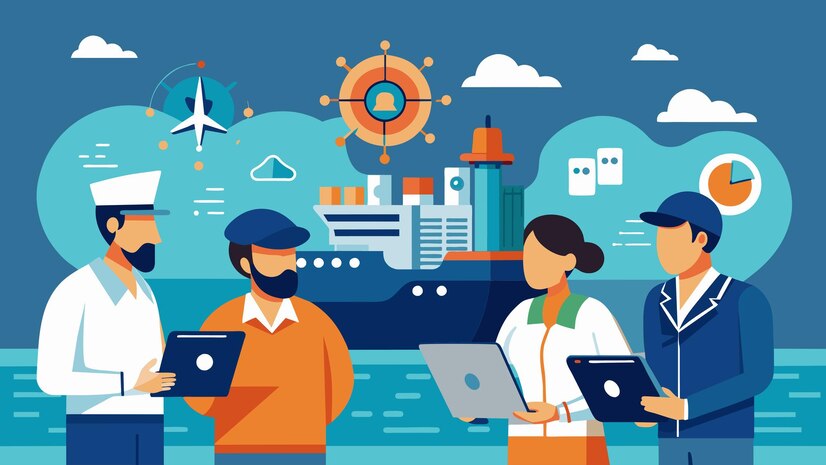Ensuring safety on yachts is essential to protect both passengers and the vessel. While yachting offers a luxurious and thrilling experience, it also comes with the responsibility of navigating unpredictable marine conditions. Comprehensive safety protocols, including proper life-saving equipment and detailed emergency response plans, are vital. These measures enhance the yachting experience and ensure adherence to international maritime regulations, creating a secure and enjoyable environment on the water. Join World BI's “Digital Transformation in Hotel Technology” Conference to delve into yacht safety with industry experts.
Yachts are opulent vessels primarily used for recreational purposes, ranging from leisure cruises to competitive racing. These watercraft come in various sizes, from smaller models suitable for day trips to extravagant superyachts equipped with luxurious amenities like pools and helipads. Yachts can be propelled by sails, engines, or a combination of both, offering enthusiasts the opportunity to indulge in activities such as coastal cruising, island exploration, or participation in regattas. The allure of yachting often lies in its association with luxury and exclusivity, attracting individuals seeking unparalleled comfort, style, and adventure on the open seas.
Importance of Yachts Safety
- The significance of ensuring safety on yachts cannot be overstated, as it directly affects the welfare and protection of everyone aboard.
- Yachts, commonly used for leisure activities in various maritime settings, inherently carry risks that require strict safety measures.
- This includes implementing appropriate safety gear like life vests, fire extinguishers, and emergency communication devices, as well as following navigation protocols and regulations.
- Moreover, regular vessel maintenance and inspections are essential for identifying and addressing potential safety concerns proactively.
- By prioritizing safety, yacht owners and operators not only safeguard the lives of those aboard but also cultivate a culture of responsible seamanship, enhancing the overall enjoyment and tranquility of every journey.
Safety Measures of Yachts
Here are some essential safety measures:
1. Pre-Departure Safety Checks
-
Vessel Inspection
- Hull Integrity: Check for damage and secure fittings.
- Engine and Mechanical Systems: Inspect for wear and ensure functionality.
- Electrical Systems: Test navigation lights and bilge pumps.
-
Safety Equipment
- Life Jackets and PFDs: Verify quantity and condition.
- Fire Extinguishers: Check for functionality and expiration.
- First Aid Kits: Ensure stocked with essentials.
- Distress Signals and Flares: Verify accessibility and condition.
- EPIRB: Test and confirm registration.
-
Documentation
- Registration and Insurance: Ensure up-to-date paperwork.
- Crew Licenses: Verify qualifications.
- Emergency Contacts: Compile a readily accessible list.

2. Onboard Safety Protocols
-
Safety Briefing for Crew and Passengers
- Familiarization with Safety Equipment Locations:
Ensure all individuals are acquainted with the whereabouts of essential safety gear like life jackets, fire extinguishers, and first aid kits.
- Proper Usage of Life Jackets and PFDs:
Provide instructions on correctly donning and utilizing life jackets and personal flotation devices (PFDs) in case of an emergency.
- Emergency Response Procedures:
Detail the steps to be taken in various emergency scenarios such as man overboard situations, fires, or medical emergencies.
- Familiarization with Safety Equipment Locations:
-
Navigation Safety
- Utilization of Navigational Charts and GPS:
Educate individuals on how to interpret navigational charts and utilize GPS devices for route planning and navigation.
- Weather Condition Monitoring:
Stress the significance of regularly monitoring weather forecasts and identifying indications of changing weather patterns.
- Collision Prevention Techniques:
Discuss strategies for averting collisions with other vessels, emphasizing the importance of maintaining a vigilant lookout and understanding navigation rules.
- Night Navigation Guidelines:
Guide safe navigation practices during nighttime, including the proper usage of navigation lights and radar systems.
- Utilization of Navigational Charts and GPS:
-
Communication Systems
- VHF Radio Operation Training:
Conduct training sessions for crew and passengers on the operation of VHF radios, covering routine communication protocols and distress call procedures.
- Satellite Phone Usage Instructions:
Familiarize individuals with the operation of satellite phones for communication in remote areas or during emergencies.
- Emergency Communication Protocols:
Establish clear protocols for initiating emergency communications, including the proper use of distress signals and contacting relevant emergency services.
- VHF Radio Operation Training:
3. Emergency Preparedness
-
Fire Safety
- Fire Detection and Alarm Systems: Ensure the operational readiness of fire detection systems, including smoke detectors and alarms, to promptly identify fire hazards.
- Firefighting Equipment and Procedures:
Provide comprehensive training on the utilization of firefighting equipment such as extinguishers and fire blankets.
Establish clear protocols for responding to fires, including evacuation procedures and predetermined assembly points.
- Man Overboard Procedures
- Immediate Actions:
Educate crew members on the immediate steps to take in the event of a man-overboard situation, including halting the vessel, deploying flotation devices, and maintaining visual contact with the individual in the water.
- Search and Rescue Operations:
Train crew members in effective search and rescue methodologies, encompassing the deployment of rescue equipment like lifebuoys and the implementation of systematic search patterns to locate the individual overboard.
- Immediate Actions:
- Medical Emergencies
- First Aid Response:
Equip crew members with comprehensive first aid training and ensure that onboard first aid kits are fully stocked with essential supplies.
Provide instruction on fundamental first aid procedures for addressing common medical emergencies. - Evacuation Procedures:
Establish robust protocols for medical evacuations, including the prompt notification of emergency medical services and the coordination of evacuation efforts with nearby facilities, whether by sea or air.
- First Aid Response:
- Abandon Ship Protocols
- Life Raft Deployment:
Train crew members in the proper procedures for deploying and inflating life rafts, encompassing protocols for launching and boarding.
- Abandon Ship Drill:
Regularly conduct drills to rehearse abandon ship procedures, including the swift donning of life jackets, the orderly muster at assigned stations, and the proficient boarding of life rafts under simulated conditions.
- Life Raft Deployment:
4. Maintenance and Upkeep
- Regular Inspections and Servicing
- Implement scheduled maintenance routines and ensure meticulous record-keeping.
- Equipment Testing
- Regularly test fire extinguishers, alarms, EPIRBs, and communication devices.
- Conduct inspections of life jackets and PFDs to ensure they are in proper working condition.
- Cleaning and Sanitation
- Adhere to regular cleaning routines to maintain hygiene standards.
- Uphold sanitation standards to promote a healthy onboard environment.
5. Regulatory Compliance
- International Maritime Organization (IMO) Standards
- Ensure adherence to IMO standards governing safety and operational practices.
- Local and National Regulations
- Comply with local and national regulations applicable to maritime operations.
- Compliance Verification and Audits
- Conduct regular compliance verification checks and audits to ensure adherence to regulations.
6. Training and Drills
- Crew Training Programs
- Provide comprehensive safety certifications for crew members.
- Conduct ongoing training sessions to enhance crew preparedness.
- Regular Safety Drills
- Organize fire, man overboard, and abandon ship drills regularly.
7. Technological Aids
- Advanced Navigation Systems
- Utilize GPS, radar, and AIS for precise navigation and vessel tracking.
- Safety Monitoring Devices
- Install surveillance cameras and alarm systems for enhanced onboard security.
- Remote Monitoring and Alerts
- Implement satellite-based tracking systems for remote vessel monitoring.
- Utilize real-time alerts and updates for proactive safety management.

World BI Hotel Technology Conference
By embracing and implementing best practices, yacht owners, captains, and enthusiasts can navigate with confidence, knowing that they have taken the necessary steps to mitigate risks and prioritize safety on every journey. Explore the forefront of yacht safety at the upcoming Digital Transformation in Hotel Technology Conference organized by World BI. Engage in enriching discussions with industry leaders to deepen your understanding of safety measures aboard yachts. Stay tuned for event updates, and follow World BI. See you there!